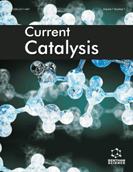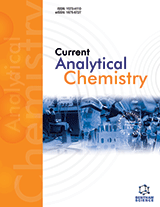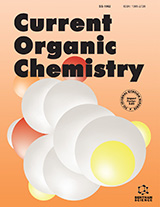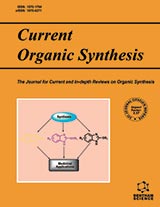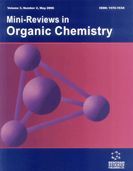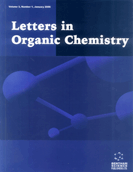Abstract
Background: Residue hydroprocessing is the most important processes in the refinery to obtain transportation fuels from the low quality petroleum resources. But the upgradation of residues is a difficult task, due to the presence of high contaminants such as sulfur, metals (Ni and V), asphaltenes and residue carbon, which cause rapid deactivation of the catalysts. The most effective approach to control catalyst deactivation is the use of the mesoporous alumina as support. Mesoporous γ-aluminas through a sol-gel method was synthesized without using any surfactant or templates. The synthesized highly porous aluminas are used to prepare NiMo catalysts for the hydroprocessing of vacuum residues.
Methods: In the present work, an attempt has been made to synthesize large pore mesoporous alumna with better thermal stability in a very simple way by using different alcoholic solvents. NiMo catalysts were further prepared using synthesized aluminas using sequential impregnation method. The catalytic activity has been evaluated using vacuum residue as feed having 21.98wt% asphaltene in a batch reactor.
Results: The mesoporous alumina synthesized using isopropanol as solvent had a wide porosity with appropriate surface area. The number of total acid sites is more for the mesoporous alumina synthesized using mixture of solvents (isopropanol and butanol). The ratio of octahedral/tetrahedral species in catalysts prepared by isopropanol is quite high indicating that the presence of weakly bonded octahedral species in this catalyst is higher than that of catalysts prepared by mixture of solvents. Hydrotreating activity suggests that due to the presence of high concentration of octahedral species in NiMo/Al2O3 catalysts prepared by isopropanol has high hydrogenation activity and hence shows higher HDM, HDS and HDAs conversions.
Conclusion: A simple, convenient and effective way is used to synthesize mesoporous alumina as support for the NiMo hydrotreating catalysts. Residue hydrotreating activity of the catalysts suggests that the coke formation by NiMo catalysts prepared by isopropanol is very low due to the presence of large porous structure and high hydrogenation activity of the catalyst. It is also found that the catalyst having higher total acidity facilitates coke formation.
Keywords: Mesoporous alumina, vacuum residue, TPR, HRTEM, hydrotreating, NiMo.
Graphical Abstract
Current Catalysis
Title:Evaluation of Residue Hydrotreating Catalysts Supported on Mesoporous Aluminas
Volume: 6
Author(s): Kirtika Kohli, Samir K. Maity*, Ravindra Prajapati, Madhusudan Sau and Madhukar O. Garg
Affiliation:
- Indian Institute of Petroleum, Dehradun,India
Keywords: Mesoporous alumina, vacuum residue, TPR, HRTEM, hydrotreating, NiMo.
Abstract: Background: Residue hydroprocessing is the most important processes in the refinery to obtain transportation fuels from the low quality petroleum resources. But the upgradation of residues is a difficult task, due to the presence of high contaminants such as sulfur, metals (Ni and V), asphaltenes and residue carbon, which cause rapid deactivation of the catalysts. The most effective approach to control catalyst deactivation is the use of the mesoporous alumina as support. Mesoporous γ-aluminas through a sol-gel method was synthesized without using any surfactant or templates. The synthesized highly porous aluminas are used to prepare NiMo catalysts for the hydroprocessing of vacuum residues.
Methods: In the present work, an attempt has been made to synthesize large pore mesoporous alumna with better thermal stability in a very simple way by using different alcoholic solvents. NiMo catalysts were further prepared using synthesized aluminas using sequential impregnation method. The catalytic activity has been evaluated using vacuum residue as feed having 21.98wt% asphaltene in a batch reactor.
Results: The mesoporous alumina synthesized using isopropanol as solvent had a wide porosity with appropriate surface area. The number of total acid sites is more for the mesoporous alumina synthesized using mixture of solvents (isopropanol and butanol). The ratio of octahedral/tetrahedral species in catalysts prepared by isopropanol is quite high indicating that the presence of weakly bonded octahedral species in this catalyst is higher than that of catalysts prepared by mixture of solvents. Hydrotreating activity suggests that due to the presence of high concentration of octahedral species in NiMo/Al2O3 catalysts prepared by isopropanol has high hydrogenation activity and hence shows higher HDM, HDS and HDAs conversions.
Conclusion: A simple, convenient and effective way is used to synthesize mesoporous alumina as support for the NiMo hydrotreating catalysts. Residue hydrotreating activity of the catalysts suggests that the coke formation by NiMo catalysts prepared by isopropanol is very low due to the presence of large porous structure and high hydrogenation activity of the catalyst. It is also found that the catalyst having higher total acidity facilitates coke formation.
Export Options
About this article
Cite this article as:
Kohli Kirtika, Maity K. Samir*, Prajapati Ravindra, Sau Madhusudan and Garg O. Madhukar, Evaluation of Residue Hydrotreating Catalysts Supported on Mesoporous Aluminas, Current Catalysis 2017; 6 (3) . https://dx.doi.org/10.2174/2211544706666170207120704
| DOI https://dx.doi.org/10.2174/2211544706666170207120704 |
Print ISSN 2211-5447 |
| Publisher Name Bentham Science Publisher |
Online ISSN 2211-5455 |
 10
10 1
1 1
1 1
1
- Author Guidelines
- Bentham Author Support Services (BASS)
- Graphical Abstracts
- Fabricating and Stating False Information
- Research Misconduct
- Post Publication Discussions and Corrections
- Publishing Ethics and Rectitude
- Increase Visibility of Your Article
- Archiving Policies
- Peer Review Workflow
- Order Your Article Before Print
- Promote Your Article
- Manuscript Transfer Facility
- Editorial Policies
- Allegations from Whistleblowers
- Announcements


